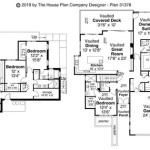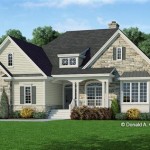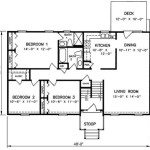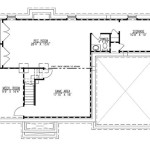```html
A-Frame House Plans with Basement: Maximizing Space and Style
A-frame houses have long been celebrated for their distinctive architectural appeal, offering a unique aesthetic that blends seamlessly with natural landscapes. Their steep, triangular roofline creates a striking visual statement while providing inherent structural stability. Combining this iconic design with a basement foundation presents a compelling option for homeowners seeking to maximize living space, add versatility, and enhance the overall value of their property. This article explores the intricacies of A-frame house plans with basements, examining the benefits, design considerations, potential challenges, and crucial factors to consider before embarking on such a project.
The allure of an A-frame house lies in its simplicity and efficiency. The clean lines and angled roof not only create a visually appealing residence but also contribute to efficient water runoff and snow shedding. This is especially beneficial in regions prone to heavy precipitation. The addition of a basement expands the usable square footage beyond the footprint of the main floor, offering a range of possibilities for living, storage, and recreational areas.
Benefits of Incorporating a Basement
Integrating a basement into an A-frame house plan offers several advantages, significantly enhancing the functionality and value of the home:
Increased Living Space: Perhaps the most significant benefit is the expansion of living space. A basement can be transformed into additional bedrooms, a home office, a recreation room, a home theater, or a guest suite. This is particularly valuable for families needing more space as they grow or for individuals who enjoy entertaining.
Enhanced Storage Capacity: A-frame houses, due to their sloping walls, can sometimes present challenges in terms of storage. A basement provides ample space for storing seasonal items, tools, equipment, and other belongings, helping to keep the main living areas clutter-free and organized.
Added Resale Value: Homes with basements generally command a higher resale value compared to similar homes without. The additional square footage and potential functionality of a finished basement are attractive to homebuyers, making the property more desirable in the real estate market.
Protection from Weather Elements: A basement offers a degree of protection from extreme weather conditions, such as tornadoes and hurricanes. It can serve as a safe haven during severe weather events, providing a secure and sheltered environment for occupants.
Potential for Rental Income: Depending on local zoning regulations, a basement can be converted into a separate rental unit, providing a source of passive income for homeowners. This can help offset mortgage payments and other homeownership expenses.
Design Considerations for A-Frame House Plans with Basements
Designing an A-frame house with a basement requires careful consideration of several factors to ensure structural integrity, functionality, and aesthetic harmony. These considerations include:
Structural Integrity: The foundation and basement walls must be designed to withstand the weight of the house and the lateral pressure of the surrounding soil. A structural engineer should be consulted to ensure that the design meets local building codes and regulations and can withstand the specific soil conditions present at the building site.
Drainage and Waterproofing: Proper drainage and waterproofing are crucial to prevent water from seeping into the basement. This includes installing a perimeter drain system around the foundation, applying a waterproof membrane to the exterior walls, and ensuring that the ground slopes away from the house. The grade around the house must effectively divert water away from the foundation walls. Interior drainage systems may also be necessary in areas with high water tables.
Egress Windows: Building codes typically require basements to have at least one egress window for emergency escape and rescue. Egress windows must meet specific size and accessibility requirements, ensuring that occupants can easily exit the basement in case of a fire or other emergency.
Ceiling Height: The ceiling height in the basement should be adequate to provide comfortable living space. Building codes often specify minimum ceiling heights for habitable basements. Aiming for higher ceilings, if possible, will make the basement feel more spacious and airy.
Natural Light and Ventilation: Basements can often feel dark and damp, so it’s important to maximize natural light and ventilation. Incorporating larger windows, window wells, and even a walk-out basement design can help to bring more light and fresh air into the space.
Integration with the A-Frame Design: The basement design should complement the overall aesthetic of the A-frame house. This can be achieved by using similar materials, colors, and architectural details. Consider the placement of stairs leading to the basement to ensure they are easily accessible and aesthetically pleasing.
Potential Challenges and Solutions
While A-frame house plans with basements offer numerous advantages, they also present potential challenges that need to be addressed during the design and construction process:
Water Management: Controlling water infiltration is a major concern with basements. Inadequate drainage and waterproofing can lead to moisture problems, such as mold growth, mildew, and structural damage. Implementing comprehensive drainage and waterproofing measures, as described above, is essential.
Limited Natural Light: Basements often lack natural light, which can make them feel dark and confined. Addressing this requires strategic placement of windows, the use of light wells, and the incorporation of artificial lighting to brighten the space. Light-colored paint and reflective surfaces can also help to maximize natural light.
Accessibility: Providing easy access to the basement is important, especially for older adults or individuals with mobility limitations. Consider installing a ramp or an elevator to make the basement accessible to everyone.
Radon Mitigation: Radon is a naturally occurring radioactive gas that can seep into basements from the ground. Radon is a health hazard that causes lung cancer. Radon mitigation systems, such as sub-slab depressurization, can effectively remove radon from the basement air.
Cost: Building a basement can add significantly to the overall cost of construction. The cost will vary depending on the size of the basement, the complexity of the design, and the local labor and material costs. It’s important to obtain accurate cost estimates from qualified contractors before starting the project.
Zoning and Building Codes: Local zoning regulations and building codes may impose restrictions on basement construction, such as minimum ceiling heights, egress requirements, and setbacks from property lines. It’s essential to comply with all applicable regulations to avoid delays or fines.
Incorporating a basement into an A-frame design can be more complex than with a traditional foundation. The angled walls of the A-frame create unique load-bearing considerations that must be addressed when designing the foundation and basement walls. Consulting with an experienced structural engineer is crucial to ensure the structural integrity of the entire house.
The specific design of the basement will also be influenced by the surrounding topography. If the site has a significant slope, a walk-out basement may be a viable option. A walk-out basement offers several advantages, including increased natural light, easier access to the outdoors, and potential for a patio or deck. However, a walk-out basement may also require more excavation and grading, which can add to the cost of construction.
When planning the layout of the basement, consider the placement of mechanical systems, such as the furnace, water heater, and electrical panel. These systems typically require dedicated space and should be located in an area that is easily accessible for maintenance and repairs. Also plan for plumbing runs if a bathroom or wet bar are included in the basement design.
The choice of materials for the basement walls and floor is also important. Concrete is the most common material for basement walls, but other options, such as insulated concrete forms (ICFs), are also available. ICFs offer several advantages, including increased energy efficiency and improved sound insulation. For the basement floor, concrete is typically used, but it can be covered with a variety of flooring materials, such as carpet, tile, or laminate.
The interior finishing of the basement should create a comfortable and inviting living space. Consider using light colors and ample lighting to make the basement feel brighter and more spacious. Proper insulation is also important to ensure that the basement is warm in the winter and cool in the summer.
Careful planning and attention to detail are essential for successfully incorporating a basement into an A-frame house plan. By addressing the potential challenges and considering the design factors outlined above, homeowners can create a functional and aesthetically pleasing basement that enhances the value and enjoyment of their A-frame home.
```
A Frame Cabin Plan Boulder Mountain

A Frame House Plan With Walk Out Basement Plans

Untitled A Frame House Plans Cabin

Plan 80945 A Frame House With Walk Out Basement

A Frame House Plans W

Plan 80519 Contemporary House With Walk Out Basement

A Frame Cabin Plan Boulder Mountain

Cozy A Frame House Plans Blog Eplans Com

A Frame House Plans Floor Cool

Amazing A Frame House Plans Houseplans Blog Com
See Also








